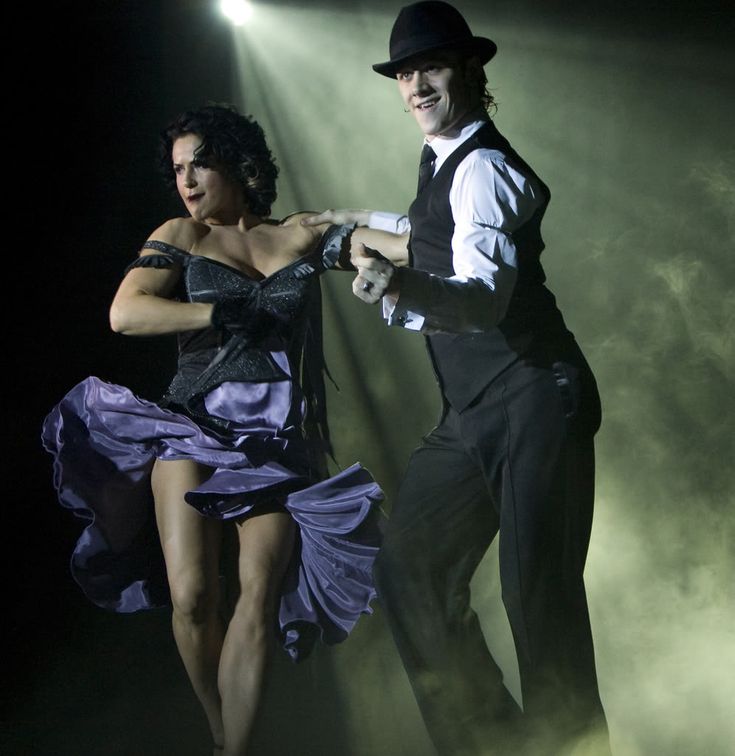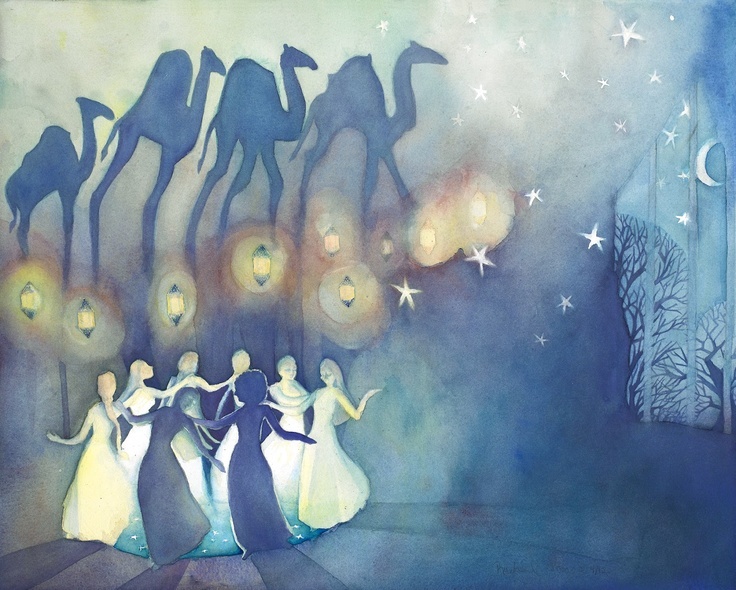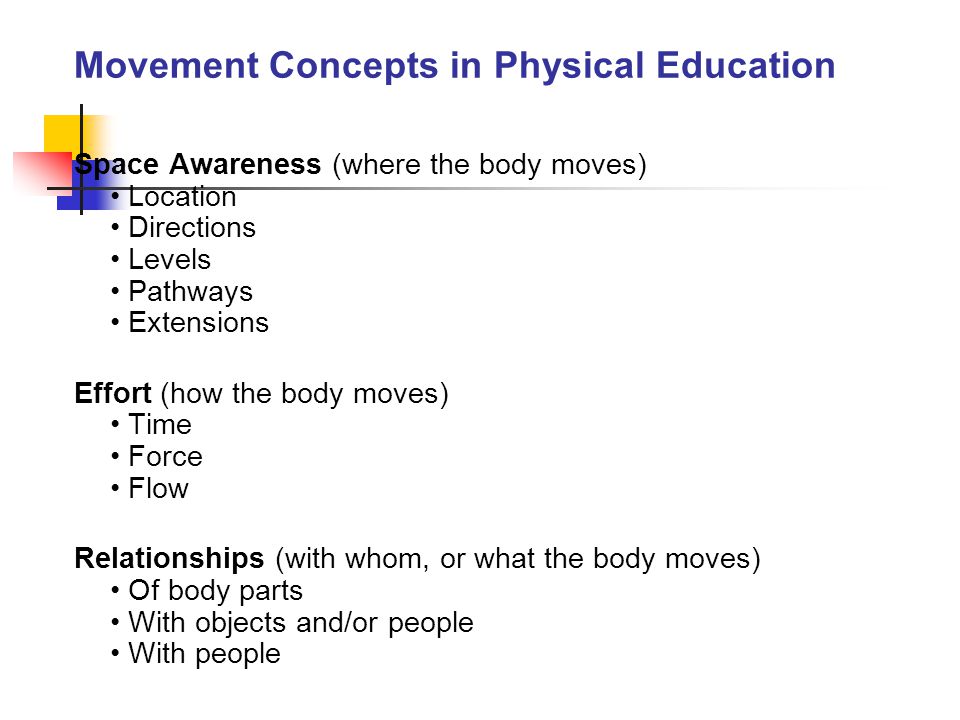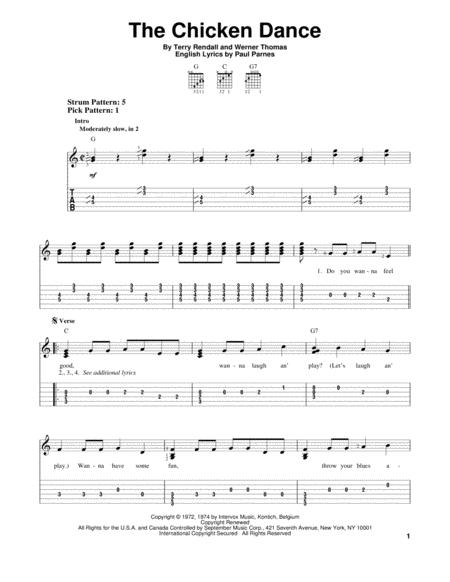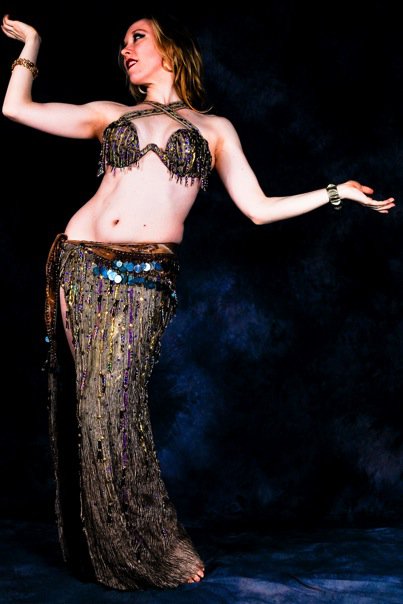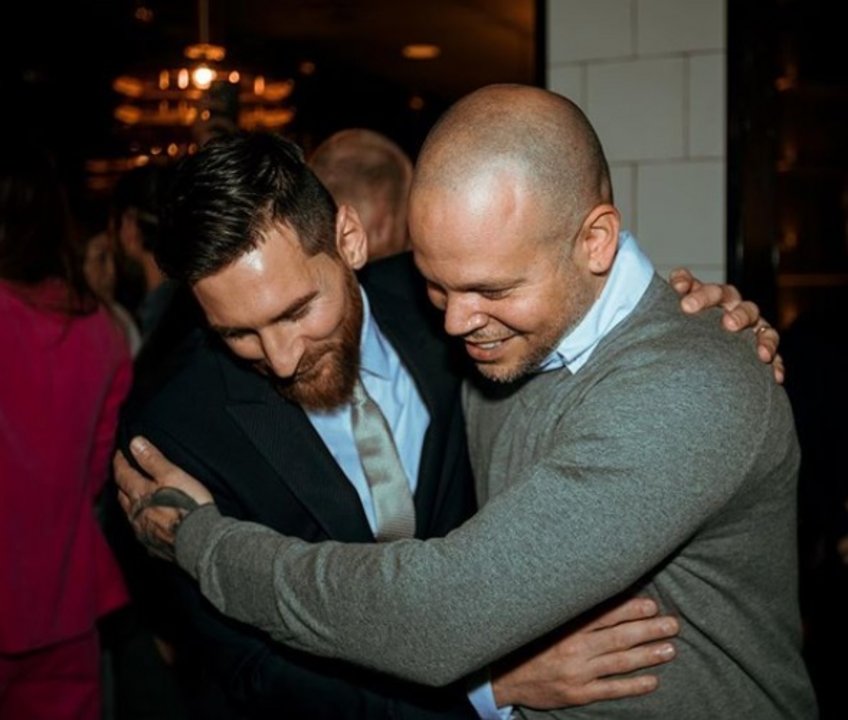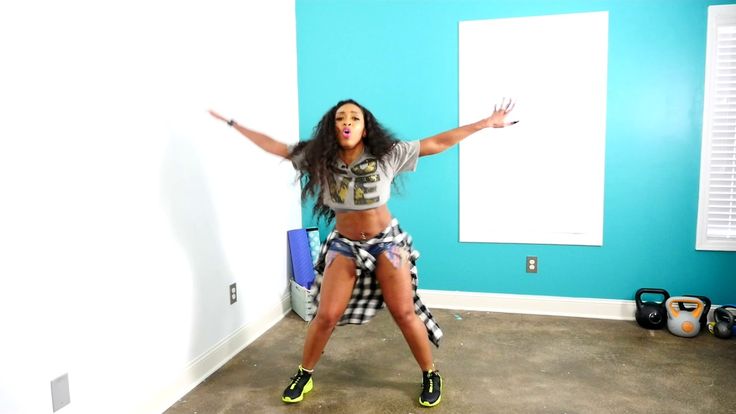How to ballroom dance by yourself
A Detailed Guide To Practice Ballroom dancing
Practicing between your Ballroom dance lessons is the single most important thing you should be doing if you want to improve.
In fact, I believe it is more important to practice than to take lots of lessons.
Why? Because in the lessons is where GET NEW information/knowledge, but it is only during your Ballroom dance practice that you can RETAIN what you have been learning.
I often hear from my members that they can’t remember their moves, retain techniques, or execute all the dances they have been learning. And then I realize it’s usually because they only take lessons – they don’t practice much.
Big mistake… You can potentially spend lots of hours and money on Ballroom dancing and not get anywhere without consistent practice.
So let’s say you are sold on the idea of practice, what do you do?
The majority of people have no idea how to practice their dancing effectively and make the best use of their time.
No worries I was in your position. As a professional Dancesport competitor I was constantly trying to analyze the best way to practice my own techniques/routines. I wanted to craft a perfect practice – one that gets results. A practice I can feel steady improvement from.
I am happy to say that after countless of hours of trying things out, together with advice from the top dance teachers in the world, I finally narrowed down one system of practicing that I currently use myself to practice with my wife, Kim. And I am happy to share it below. Now, you may not be a competitive dancer, but that doesn’t matter. Any social dancer can use this system to practice and improve their dancing.
The following system can get quite complicated. I will give you the basic idea, but you can alter it in any way to suit your needs and time frame.
Ballroom dance practice system overview:
Step #1. Choose subjects: 2-3 subjects you want to improve.
Step #2. Divide the time: Allocate the time to work on each subject.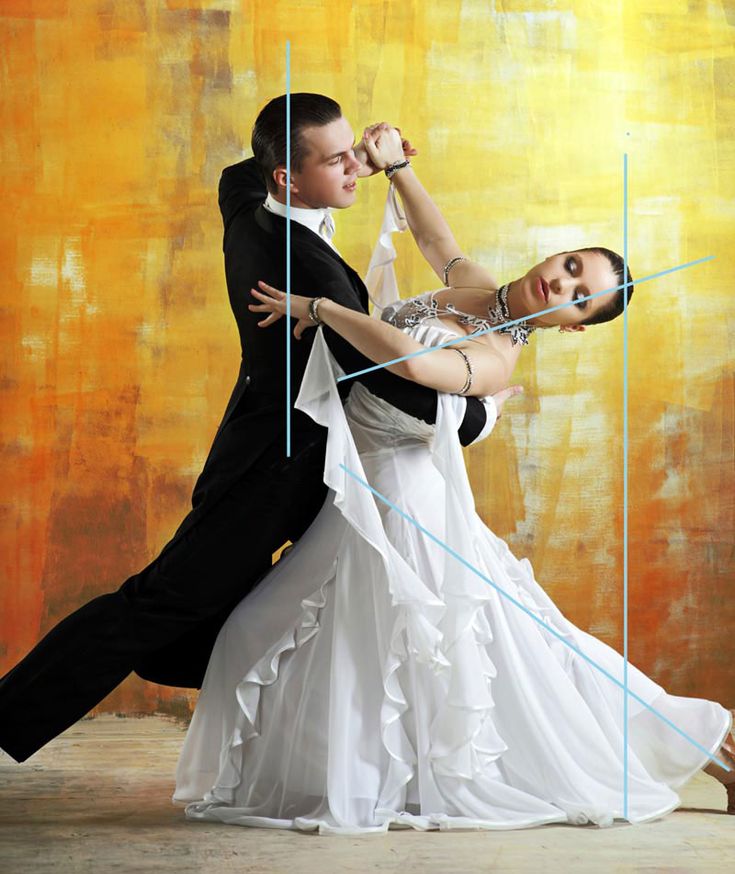
Step #3. Make a weekly schedule
Let’s look at each one now.
Step 1: Choose 2-3 subjects
Everything starts with what you want to actually improve.
When I use the word “subjects”, I am referring to specific performance, technique, Routine elements you want to focus on in your practice.
Here are some examples of subjects to choose from:
– Keep the Rhythm/Timing in every step
– Sharper leg action
– Fuller hip movement
– Awareness of posture
– Arm movement coordinated with my leg action
– Use of frame to lead
– Listening to the partner’s lead
– Be able to transition between the 7 moves I know in Salsa
– Use the standing leg to push into the next step
– Awareness of my partner
– [For Showcase] Eye contact with audience
– [For Competition] Create big volume in my body
As you can see it can be anything. So what do you want to get better at?
You want to look at your weak points that need work. Is there something your teacher is repeatedly on your case about? That could be a good subject to focus on. You can always consult with a teacher about this.
You can always consult with a teacher about this.
Take a piece of paper and write down 3 subjects right now. Now take each of the subjects and make them as specific as possible.
For example: I want to stay on time in cha cha by stretching counts “1” and “3” longer.
Another example: I want to listen to my partner’s lead and react faster to the direction changes that he leads me into.
Last example: I want to make sure that my arm movements are always related to what my legs are doing in Rumba – So that my arms are coordinated with the entire body.
I hope this is becoming more clear. Basically come up with 2-3 subjects you want to work on for the next little while (2-4 months).
Note, you can even pick specific subjects depending on the dance…
For example, if you have been struggling with dropping your posture and frame only in Waltz, your subject for the Waltz can be something like: “I want to create a better posture by constantly stretching my spine up during the Waltz”.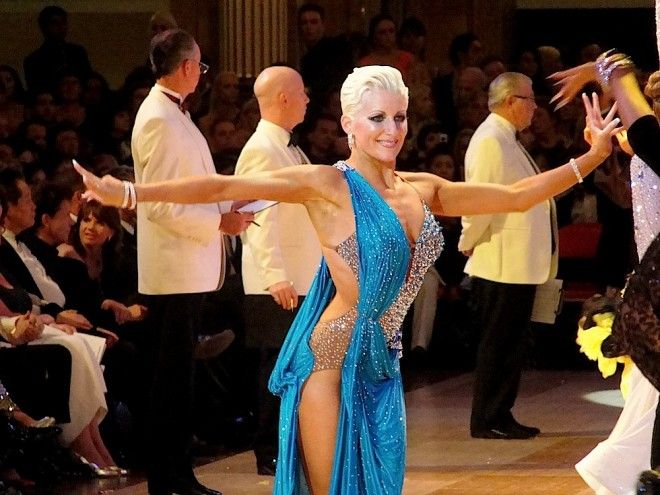
Okay now that you have your subjects let’s move on.
Step 2: Allocate the practice time
Okay you got your 3 subjects, now let’s figure out how to actually practice them.
Most people make the mistake of trying to work on ALL 3 subjects at the same time. Unfortunately our brains are not that good at multitasking and often time you will just confuse yourself without actually getting anything done. You need to focus on 1 subject at a time to make any real progress.
We will look more in depth into how to structure a weekly practice in the next section, but for right now let’s just assume that every time you practice, you will do 45 minutes. It can also be 60 minutes, 1.5 hours, or whatever you want… that is up to you. So for our example, you will practice for 45 minutes. Divide it into 3, 15-minute sections and assign each subject to a 15-minute slot.
Here is an example:
1st 15 minutes: Focus on turning out my feet in Rumba moves 1-5 or a routine you may have.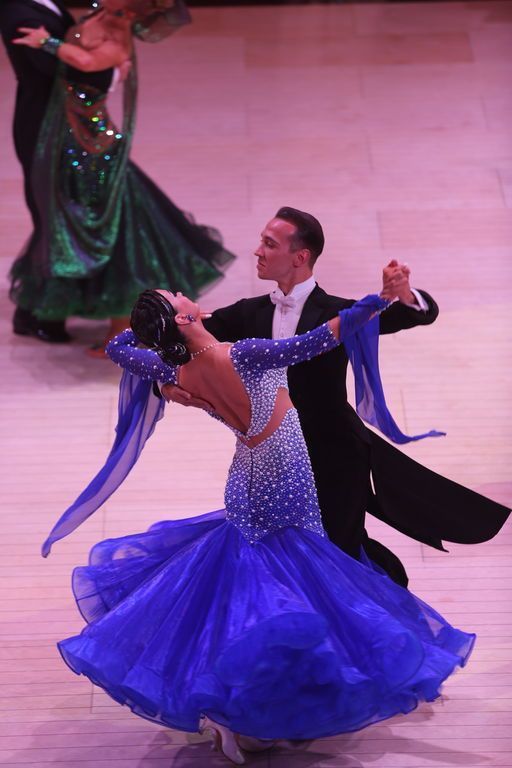
2nd 15 minutes: Focus on rise and fall in all the moves in Waltz.
3rd 15 minutes: Really listen to the music and stay on time during my Foxtrot basic steps.
So for 15 minutes you are just doing 1 thing only. Use a timer to let yourself know when the time is up. As soon as the timer ends, switch into the next subject.
It will take time in the beginning to be able to focus on just 1 subject, but if you do this, I promise you will see results. As you practice you will catch yourself, as do I sometimes, starting to drift into another subject – but you need to practice self-control and stay focused on the task at hand. I can’t stress this enough, you need to stay with one subject for a whole 10, 15 or 20 minutes so that your body will get the necessary repetition it needs to develop muscle memory.
Since Ballroom and Latin dancing has so many elements, you need to practice them all, but NOT AT THE SAME TIME.
Within those 15 minutes you will have the time to go deep into improving THAT ONE SUBJECT. Start by dancing to music, then slow down… Do the movements with different speeds all the while only trying to work on that one thing (your subject). Don’t do a lot of talking, just try to feel your body doing the right things over and over again.
Start by dancing to music, then slow down… Do the movements with different speeds all the while only trying to work on that one thing (your subject). Don’t do a lot of talking, just try to feel your body doing the right things over and over again.
Step 3: Weekly schedule
So now it’s time to put the above steps into a weekly schedule.
You want to create a sort of plan that you can follow every week. Usually you’d want to go through each dance every week at least once. But this greatly depends on how often you practice. So if it takes you 2-3 weeks to go through each of your dances, this is okay too.
Rather than get too wordy, here is an example of a weekly schedule that you can copy and modify:
Let’s assume the following:
– You practice on 3 days: Mondays, Wednesdays and Fridays.
– You are focusing on these 3 dances this week: Cha Cha, Salsa, Foxtrot.
– The 3 general subjects are: Posture, Timing/Rhythm, Leg action.
– And you can practice for 45 minutes per day.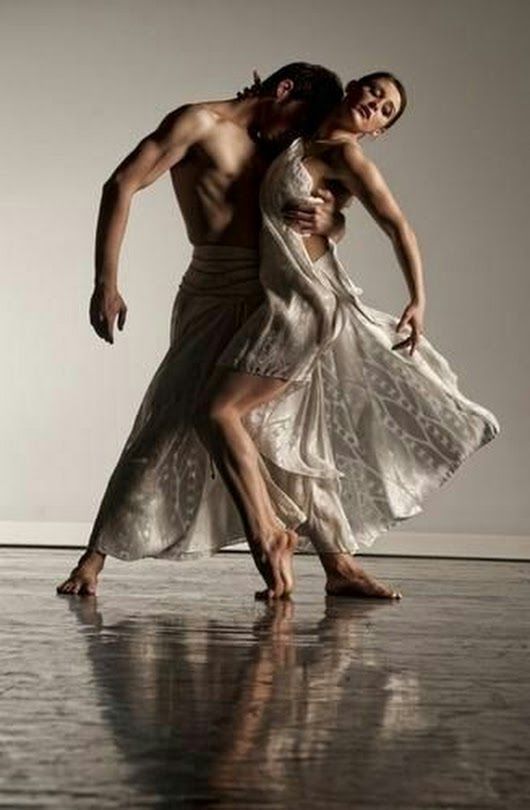
So what you can do is on each day do 1 dance with all 3 subjects.
Here is a rough plan:
Day 1 Monday – Cha Cha
Cha Cha 1st 15 minutes: Work on posture
Cha Cha 2nd 15 minutes: Timing/Rhythm
Cha Cha 3rd 15 minutes: Leg action
Day 2 Wednsday – Salsa
Salsa 1st 15 minutes: Work on posture
Salsa 2nd 15 minutes: Timing/Rhythm
Salsa 3rd 15 minutes: Leg action
Day 2 Friday – Foxtrot
Foxtrot 1st 15 minutes: Work on posture
Foxtrot 2nd 15 minutes: Timing/Rhythm
Foxtrot 3rd 15 minutes: Leg action
Notice I am using the same subjects for each dance – but you can do different subjects depending on the dance too. This is just an example and again you should modify it to your needs. For instance, you may want to only work on 2 subjects per day and then use the last 15 minutes to just go through all the dances for memory sake. That is okay too.
Or you may want to do 10 minutes per subject and do more dances per day – it’s all good.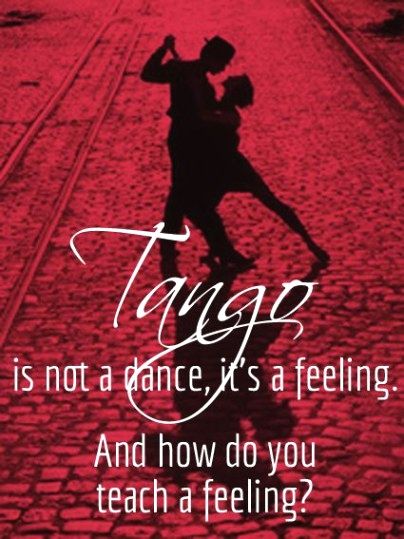 You can get creative and make a plan that works for you.
You can get creative and make a plan that works for you.
My personal Ballroom dance practice with Kim started off quite complex, and over time we simplified… We figured out that for us doing less subjects for longer time was more beneficial. We also found out that I needed my own subjects and she wanted to work on different subjects for herself. So yes, you can do the same dance and same moves and work on completely different things!
At the end of the day – just having some plan can make all the difference. So next time you go to your studio, take a few minutes to make a plan before you start dancing. Best of all, you can do this with a partner or solo. That’s right you don’t need a partner to practice and improve your dancing with this system.
I hope you found this guide useful and that you will actually implement it in some way.
If you have any questions please leave a comment below and I’d be happy to answer.
Related:
How to find a dance partner
Best dances to learn
Should you teach your partner
The best kind of teacher
Ballroom Basic dance steps for beginners
How To Ballroom Dance For Beginners
Learn how to Ballroom dance with our step by step Latin and Ballroom dance lessons online.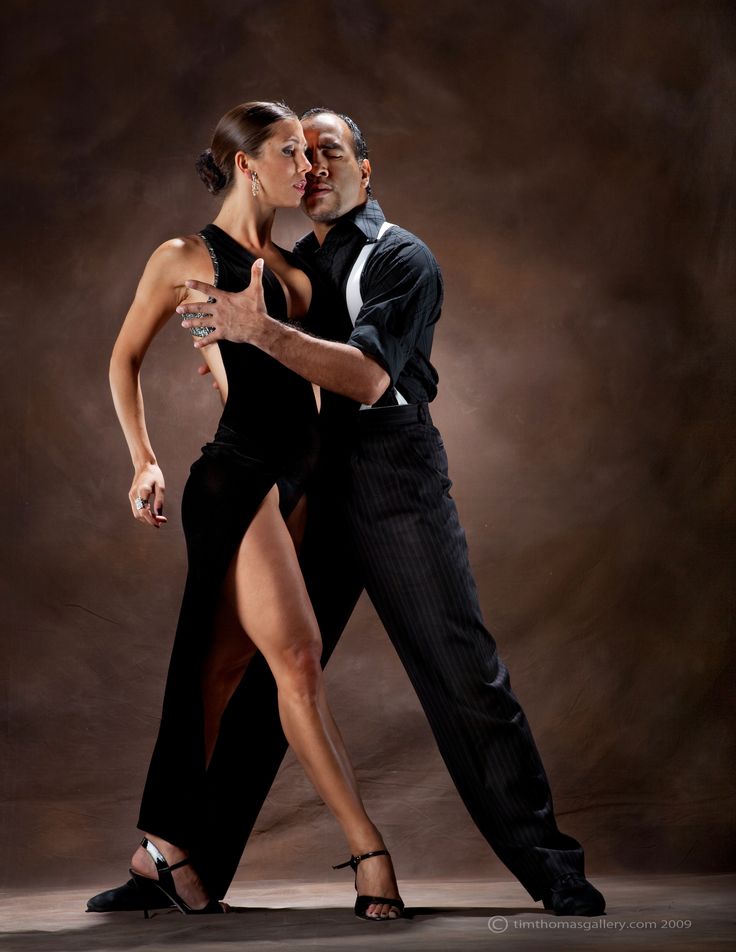
Our videos will break everything to make sure you know your steps, timing and technique.
Below you will find free Basic Ballroom dance steps for beginners for Cha Cha, Rumba, Salsa, Swing, Tango, Foxtrot, Waltz and Merengue. In each mini course you will learn the most essential basic steps with HD videos.
How to Ballroom dance for beginners - Free Video Courses:
How to dance with a partner 101 - Social dance steps
Get introduced to social dance steps in this free mini course. Learn how to social dance with 3 Ballroom dances: Rumba basic, Swing basic and Waltz basic. These dances are perfect for partner dancing at weddings and parties. Perfect for beginners looking to get started.
Waltz dance steps for beginners
The slow Waltz is one of the most classical Ballroom dances - dating back to 16th century when they used to hold "Balls". The Waltz's main characteristic is the rise and fall used through out all the steps.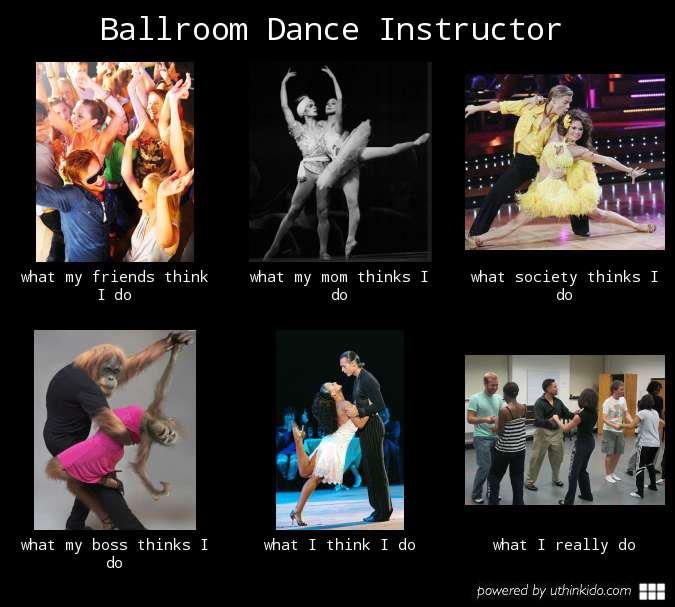 Our videos will teach you the most basic Waltz steps with ease.
Our videos will teach you the most basic Waltz steps with ease.
Cha Cha dance steps for beginners
This cheeky dance is perfect for anyone starting out. This Ballroom dance has a lot of quick and sharp foot and leg movements. It is characterized by a triple step which is danced on the "Cha Cha 1" counts. In this video course you will learn 3 beginner dance steps that you will be able to use right away.
Swing dance steps for beginners (East coast Swing)
The East coast Swing combines rocks steps and triple steps to create a very fun and energetic dance. This dance is influenced by rock n roll and Lindy hop styles - which give it tons of variations including kicks, flicks and turns. Have some fun with the swing now!
Rumba dance steps for beginners
The Rumba combines lots of body, hip and arm movements to make this Cuban dance very expressive. In this mini course you will learn the basic steps, box step and slow underarm turn. This dance requires lots of control because of its rhythm - Slow, Quick, Quick. Learn the basic steps with our videos in this beginner course.
Learn the basic steps with our videos in this beginner course.
Salsa dance steps for beginners
This popular Latin dance is perfect for those of you who like to fast rhythms and lots of turns and spins. This dance is a great for social dancing with its emphasize on lead and follow - where the man initiates movements and the lady follows. After our mini course you'll be able to use what you learned in Latin clubs.
Foxtrot dance steps for beginners
One of the first Ballroom dances that people usually learn is the Foxtrot. It is a very elegant dance that travels around the room. Both men and women push off the standing leg in order to move from foot to foot. This dance is one of the best for pure lead and follow.
Tango dance lessons online for beginners
This Ballroom dance is great for passionate dancers who like to express the Tango music. This is a traveling Ballroom dance that combines a lot of shapes and rotational movements.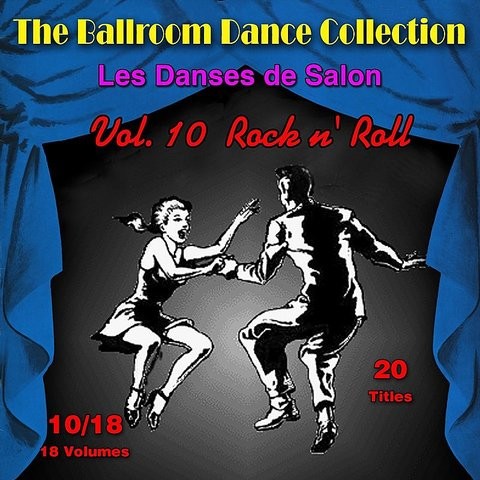 In our mini course you will learn 3 beginner moves to get you started. Enjoy.
In our mini course you will learn 3 beginner moves to get you started. Enjoy.
Merengue dance steps for beginners
Here is a Latin dance that is considered to be the easiest of all! The saying goes: "If you can walk, you can Merengue". The basic steps all consist of small weight changes that could be danced on the spot, or across the floor. There are lots of intricate turns and arm twists too.
Want More Latin & Ballroom Lessons?
Passion4Dancing Dance Training
Become a member at Passion4dancing.com and get access to 300+ video lessons teaching you Latin and Ballroom dancing (American & International Style).
Visit Pasion4Dancing (Click Here)
90,000 12 life hacks, to quickly learn how to dance from Mamita DanceDances
Author: Pavel Gather
Psychologist, Lecturer Salsa and Tango
Dances
Author: Pavel Pavel
Psychologist, Lecturer Salsa
on At the start, you always want to get a quick result.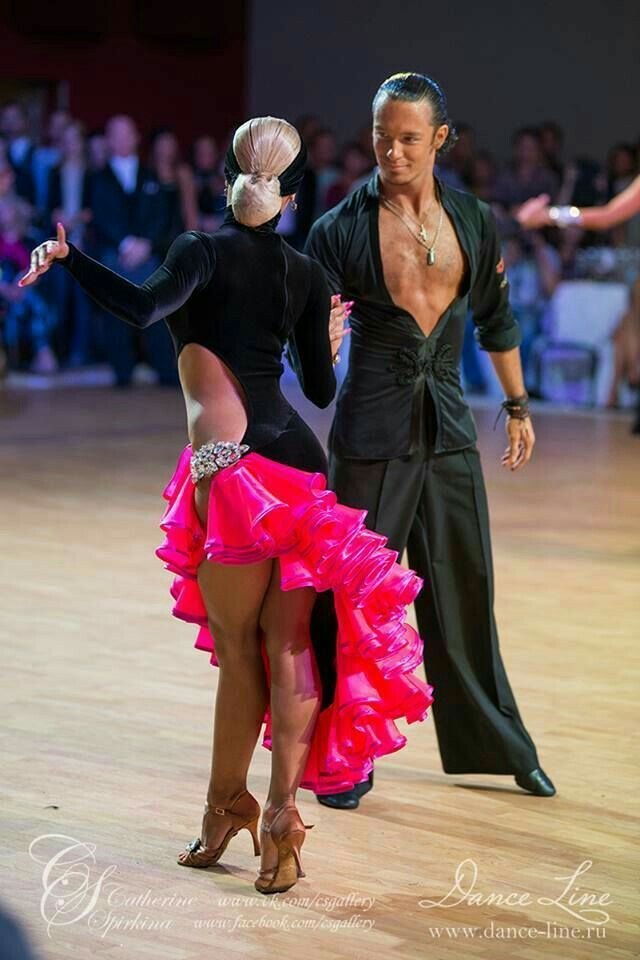 When it doesn't happen, the hypothesis arises that everything takes time. After a conditionally acceptable time, humility comes to mastering pair dances, which, perhaps, is not given, and I will just do what I learned somehow.
When it doesn't happen, the hypothesis arises that everything takes time. After a conditionally acceptable time, humility comes to mastering pair dances, which, perhaps, is not given, and I will just do what I learned somehow.
This is the most common story of those who believe that the mere act of attending a pair dance class is enough to learn how to dance.
Absolutely not. If you want to really dance well, you have to make an effort outside of the dance class. A good teacher will definitely be needed, but the initiative should be on your side.
1. Listen to music
The most common and accessible advice that is given already in the first lessons. And it definitely works. Music creates a certain atmosphere of the dance and intuitively you want to move to it. It doesn't matter where you listen to music - in the car, on headphones while walking or doing household chores.
An addition that will help you dance better is your active participation in the music. Sing along, dance or simply beat musical accents with any free parts of the body. In the subway, for example, it is enough to tap out bright moments with your fingers, in the car to sing along with sounds, and at home you can jump for pleasure.
Sing along, dance or simply beat musical accents with any free parts of the body. In the subway, for example, it is enough to tap out bright moments with your fingers, in the car to sing along with sounds, and at home you can jump for pleasure.
2. Watch videos of good dancers
It's complicated, but also obvious. It’s more difficult, because without recommendations from more experienced dancers, unfortunately, it’s not so easy to find a good quality video on the net (I mean not the resolution quality, but the content itself).
Meaningful video viewing is about building an understanding of HOW dancers make a particular impression on a partner or viewer. Technology is at the heart of everything. Understanding how the pros do it is a big step forward.
It is important to distinguish a show from a disco dance, a staged performance from an improvisation, a stylized dance from an authentic one, etc. Ask for recommendations and dance teachers will always throw off a couple of videos of worthy landmarks.
Tango Z. Showreel.
Online modern tango courses
Tango nuevo is the most advanced version of tango. We can quickly learn to dance from zero to a steep level.
| View details |
3. Dance in salsatecas/milongas/discotheques
A very delicate moment when it is worth coming to the first party. From a technical point of view, most students in 1-3 months have a sufficient set of figures and techniques to come and dance calmly. Psychologically, the same moment can be stretched out for an indefinite time. After all, it is imperative to “not lose face”, “learn more figures” and be sure what to do in case “there is an unfamiliar movement”.
In fact, the partygoers don't really care (except for a small layer of non-professional teachers who want to help inexperienced dancers by treating them as customers in the future). It is important to come and try dancing after a month of classes.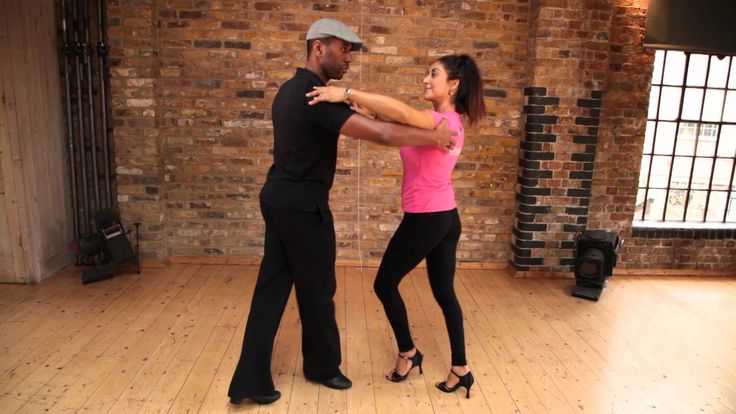 You can only with friends or guys from your group. This will be enough to feel the adrenaline and inspiration from the dance.
You can only with friends or guys from your group. This will be enough to feel the adrenaline and inspiration from the dance.
4. Dance with partners or partners not of your level
The conventional wisdom that you need to practice in groups of your level does not withstand the test of experience. Perhaps now your eyes widened in surprise, and you want to meaningfully read the phrase again. Yes, you saw everything correctly: when you dance with a partner of your level, you don’t grow anywhere.
It's important to understand that not only does it work one way and you have to dance with cooler dancers, but it works even more effectively the other way. It is no coincidence that teaching pair dances dramatically raises the level of the teacher himself. You have an endless stream of very beginner dancers.
How it works. A more experienced partner needs to be "stretched". It's easy and obvious. With beginners, you need to take more initiative on yourself, see the general pattern of the dance more widely, turn on and insure more, try to be an example and be more careful. The quality of interaction begins to grow significantly. And wonderful partners too.
The quality of interaction begins to grow significantly. And wonderful partners too.
Dancing with partners of your level doesn't make you grow. Dance with both beginners and more advanced dancers
Dominican Bachata Women's Style Online Course
Want to learn how to hypnotize those around you with the most appetizing part of your body? On the course we will tell you all the secrets.
| Interesting |
5. Learn to dance for a partner and for a partner
Turks and Argentines are one of the best partners in the world. In Russia, partners are highly valued. Why? The answer is simple. In Argentina and Turkey, it is not questionable for men to ask another man to lead in one piece or another and give feedback on the quality of the lead. For them, it will be a great shame to hear moralizing from a partner, or even more so to be known in the community as an insecure partner.
In Russia, due to the constant, often far-fetched, opinion that there are more women in pair dances, partners calmly get up and study their partner's part. Such partners then grow into very cool dancers and teachers. In no case do this at parties, only in class. Here we are talking only about the learning strategy. At parties, be yourself.
6. Do not memorize the links
Always try to look deeper and understand the through principle and idea of movement. Understanding what and how is done will make it possible to independently generate any sequences and chips.
Human memory is limited and there will always be a moment when something will escape and your repertoire will be limited by the size of RAM.
In Argentine tango, for example, there are seven levels of movement construction that, when mastered, will allow you to make millions of combinations. And how many dance sequences can you really remember? In rueda, more than 150 figures dance in a rare circle. It's hard to keep more in mind.
It's hard to keep more in mind.
7. Develop your body
Many years of experience in teaching couple dance shows that as soon as everyone pairs up in a class, any progress in individual style ends. But it is the individual style that distinguishes everyone at the disco: partners change, and style is always with you.
The body as the main instrument of dance must be very plastic, responsive and emotional. Surprisingly, not all pair dance schools have a general physical warm-up. It is vital to tune the body and understand how it works.
You can always train extra and concentrate more on the basic steps, as their true value is as body work. The sequence of steps is, in fact, the simplest thing that can be in pair dancing. The quality of individual performance determines the craftsmanship.
8. Try on the images of inspiring dancers
A psychological life hack for those who have already mastered the steps, but still feel that there is not enough brightness and drive.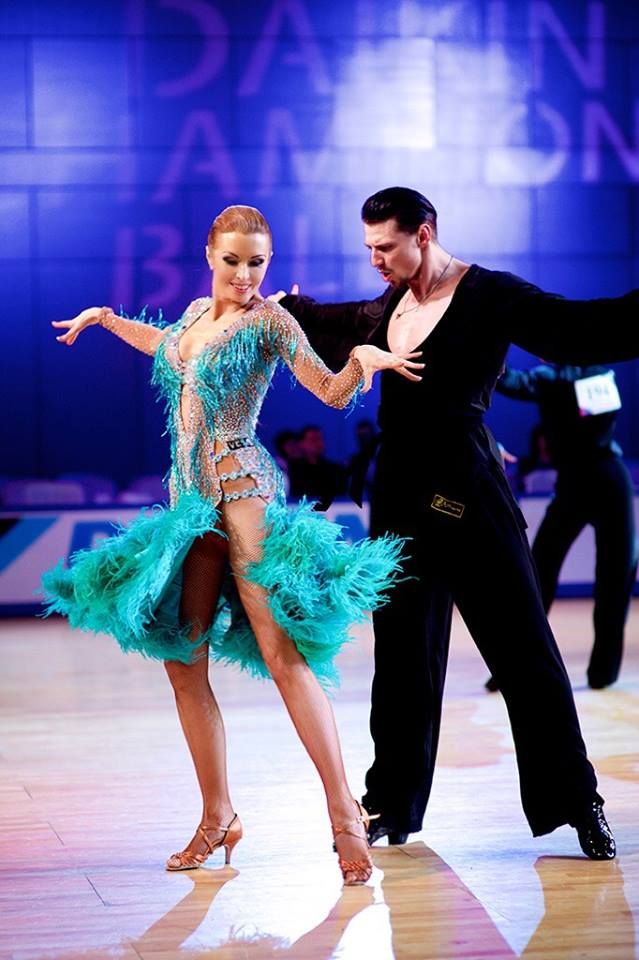 Most are terribly afraid of being someone else's "clone". Here the action is the same as under the influence of hypnosis - the more you resist, the more you plunge into an altered state of consciousness.
Most are terribly afraid of being someone else's "clone". Here the action is the same as under the influence of hypnosis - the more you resist, the more you plunge into an altered state of consciousness.
With a high degree of probability, you are already dancing like someone else's "clone". A meaningful fitting of someone else's image is that you mentally take the image of the one who inspires you (inspiration is critical in this case) and "put on" yourself. Then you start dancing and trying to feel in general how it is to be able, for example, to be the best partner or the sexiest partner in a disco. This is much more difficult than it seems. But it works extremely efficiently.
9. Dance to offbeat music
Habitual rhythms keep you tight. Tango salon or speedy timba leave little room for experimentation and fantasy. Pattern dancing is always noticeable and is reserved for beginners.
The truly new is born outside of the usual. Look for places to experiment. If there is no place, organize self-training. The main thing is not to get carried away, because music determines the style. We bring something new to pair dances, rather than trying to change them.
Look for places to experiment. If there is no place, organize self-training. The main thing is not to get carried away, because music determines the style. We bring something new to pair dances, rather than trying to change them.
Search, improvise, don't be afraid to go beyond, develop in different directions, be inspired by music atypical for the style
10. Try your hand at basic dance directions
dances exist according to their own non-choreographic laws.
This is the deepest delusion, which has turned into a ceiling for the qualitative development of partner dances. After all, all professional dancers, for example, in salsa or bachata, build their ideas on the basic choreographic principles.
Do not think that choreography is only applicable on stage. Any meaningful movement of the body can be choreographic. In general, try classical or modern choreography. Basically, hip-hop can work too.
11. Look for battle sensations
Pair dances return us to an active position of manifestation of our body. As in the days of our ancient ancestors, we impress the members of the opposite sex by how dexterous, hardy, sexy, etc. we are. Modern laws of the jungle in the entourage of big cities.
If you look around the dance floor, it becomes clear that the majority are clearly herbivores (not in the sense of vegetarians, but in relation to those around them). I am sure that predators are always more interesting in terms of the attractiveness of the image - try to find a counterbalance among herbivores, for example, a cat woman or a lion man.
The conversation is about an internal position, not about aggressiveness. Lability and lack of control are inherent in adolescents, and not in adult self-sufficient people.
Accordingly, even a training or friendly battle gives, on the one hand, practical skills - to make a bright sequence of movements, bring an idea to a climax, show a spectacular feature, on the other hand, develops the psychological basis of the dance - self-confidence, resistance to extraneous attention, self-control and self-control in complex elements.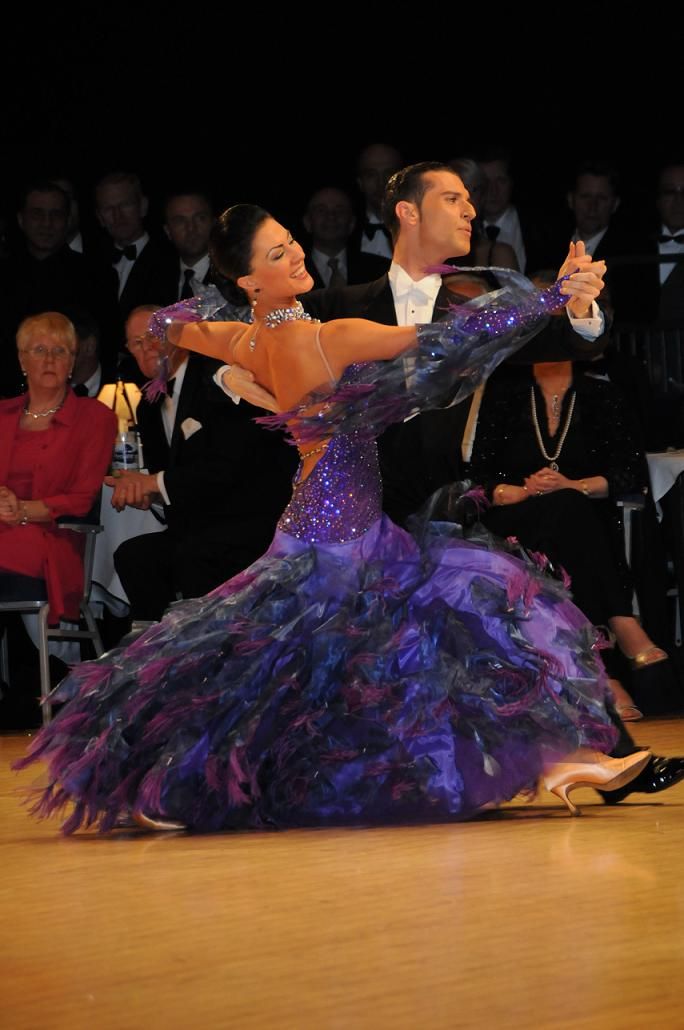
12. Communicate with professionals
The environment shapes the internal position. Basically, real passionaries of the dance community are ready to openly talk, discuss and support the development of dance in every possible way. Universal principles and the ideas they articulate have a much longer and more practical perspective than meets the eye.
Accept that, for example, behind the words "listen to your partner" is not only a beautiful metaphor, but also a practical skill to literally listen to your partner. At the same time, always treat every thought, even the most respected teacher, as a private opinion.
Your skill will lie in finding the scope of the idea even in conflicting opinions. Most often, the contradiction is speculative and the truth lies in the angle of perception or situationality.
Your dancing growth will stop sooner or later. This can happen at the level of three basic steps or years of experience in teaching and show performances.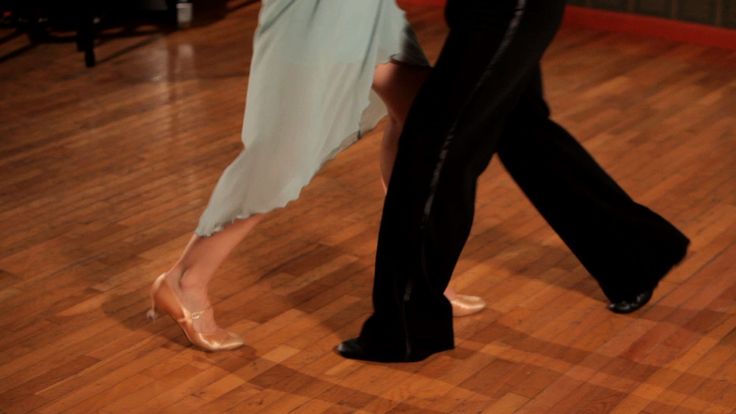 Regardless of your level, the suggested 12 life hacks can get you off the ground and greatly accelerate your dance growth. There is no way here without your motivation and activity. Take your dance development into your own hands. 9Ol000 Dangerous sexuality
Regardless of your level, the suggested 12 life hacks can get you off the ground and greatly accelerate your dance growth. There is no way here without your motivation and activity. Take your dance development into your own hands. 9Ol000 Dangerous sexuality
Salsa: destroyers of stereotypes
Couple dancing as a source of strength.
Self-destruction of the couple dance community
The Salsa series as a mirror of the community
Mamita Fridays: salsa, bachata
Destroying the myths about leading pair dances
Does dancing make us better?
The seven deadly sins of teachers
Why we will never dance bachata like the Dominicans
Why tango?
Dispute over musicality
Selection of dances according to alcohol preferences
Where to find inspiration for dancing?
Terrible tango nuevo
Distribution of roles in a salsa party
Argentinean tango through the eyes of a salsa dancer
Is there a predisposition to dancing?
Which is more effective: individual or group lessons?
Sexual overtones in pair dances
where to start your journey into the world of beauty
Once upon a time, ballroom dancing was taught from an early age, not knowing how to waltz was considered shameful.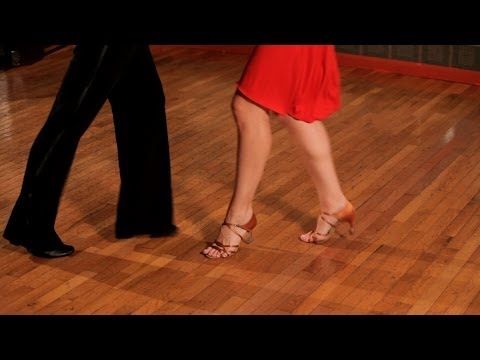 Today, the classics are back, the ability to dance will come in handy at the reception, and at a romantic date, and at a wedding.
Today, the classics are back, the ability to dance will come in handy at the reception, and at a romantic date, and at a wedding.
Which of the girls in childhood did not dream of sliding along the parquet in a waltz, like Cinderella or Natasha Rostova? The era of balls has passed, but there is always the opportunity to feel like a princess. And this is not a fairy tale, not a fantasy, but ballroom dancing, where to start learning depends on your preparation, age and place of residence, but desire should always come first! Plunge into the world of charm and you will see how life will be filled with new notes.
- Dance history
- There are no old couples - there are seniors
- What you need for classes
Dance history
Ballroom dancing, according to the classical definition, must be paired. A man and a woman communicate in the language of movements: either passionately and passionately, as in the Latin American rumba and samba, or stiffly and coldly - in the European standard.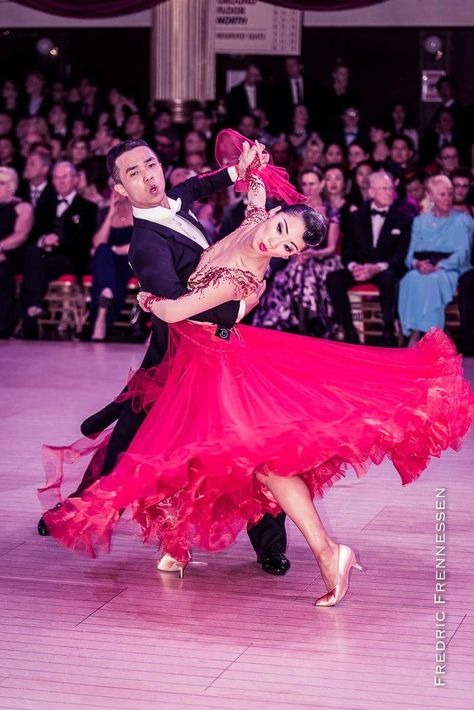
The familiar term "ballroom" came from medieval Europe, where it referred to non-professional secular dances. And only in the twentieth century did dances with African and Latin American roots penetrate into the ballroom group.
In 1920 in England ballroom dancing turned from a pleasant pastime into competitive dancing. It was then that, at the official level, the Ballroom Dancing Council divided them into groups: sports, in which contests and competitions are held, and social ones. Until 1950, five Latin American dances were gradually added to the European fast and slow waltzes, foxtrot and tango.
Since then, two directions, two competitive programs have been actively developing: European and Latin American. And to this day they are the base in the training of dancers.
There are no old couples - there are seniors
You can start dancing at any age. Of course, you can become a professional provided that you got into this sport in early childhood. However, as in sports, there are Olympic champions, and there are those who practice for themselves, for the soul. In this case, the main thing is desire. If you want to dance, dance!
However, as in sports, there are Olympic champions, and there are those who practice for themselves, for the soul. In this case, the main thing is desire. If you want to dance, dance!
If you live in the city, contact the Palace of Culture, clubs, fitness centers. Surely there are several different studios, sections in which lovers of waltzing are engaged. Groups in them, as well as in competitions, are divided by age.
Children start dancing at the age of 4-5, and this group corresponds to the standard "Children 0". And the “oldest” ones dance in the “Seniors 4” group, in which the youngest partner is 80 years old or more. There are twelve age groups in total.
Of course, it's great if you have a training partner. Its absence is most often the stumbling block, due to which the impulses of the soul remain unfulfilled. Good dance schools will help you find a partner, or they will offer you to study with specially invited professionals. Most likely, this service, like others, is not free.
By the way, ballroom dancing is expensive. Gorgeous concert costumes, professional shoes, well-groomed appearance, chic hairstyles and makeup - all this takes time, effort and money. But it's worth it.
An indescribable feeling when in an exquisite ball gown emphasizing femininity and fragility, you slide along the parquet to the enchanting sounds of a waltz. Or you “light up” in the jive, completely surrendering to the rhythm and pressure of the music.
What you need to practice
So, if you want to practice ballroom dancing for the soul, you first need to find a dance school. Next, you will need shoes with a medium stable heel. Of the clothes in training, it is better to have not trousers, but a classic short skirt and a light, tight T-shirt. Even at rehearsals, you should feel like a lady, and your partner - a man. For concerts, if any, dresses can be borrowed from the wardrobe of clubs, theaters, or rented.
Another thing is if you live in a small village, town, where there is not even a dance club.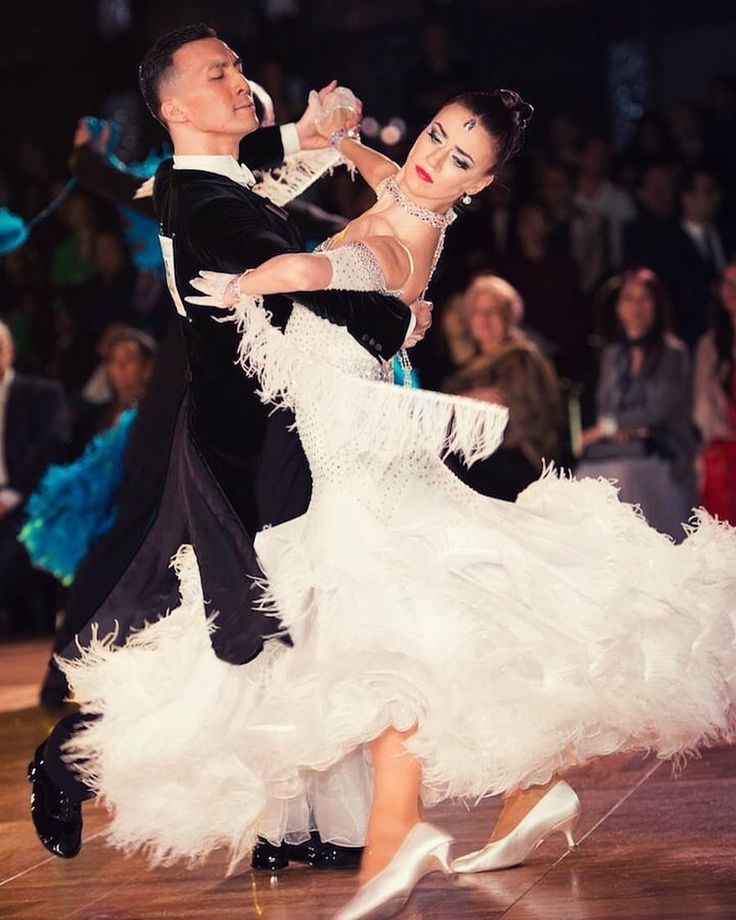 No problem. Buy or download video tutorials and practice on your own at home. Involve your friends in this, it will be more fun.
No problem. Buy or download video tutorials and practice on your own at home. Involve your friends in this, it will be more fun.
Of course, in a small room, in an apartment, it is difficult to perform a full-fledged waltz tour, but the Latin American program is danced practically on the spot. And "Cha-cha-cha" or "Jive" is a great solution if there is no pair.
Thanks to ballroom dancing, like oriental dancing, plasticity, a sense of rhythm, and self-confidence develop. Even walking will be different. Reminds me of the Dirty Dancing movies. Here is an example of how non-professionals became the stars of the dance floor due to their desire to dance.
Start by learning the simplest movements. Mandatory warm-up, then learning individual elements. And you combine everything into a single complex of movements, the dance itself.
By the way, competitions have strict rules regarding “access” to program movements. Some elements are allowed to be included in your program only when you are at a certain level according to the classification of dancers.